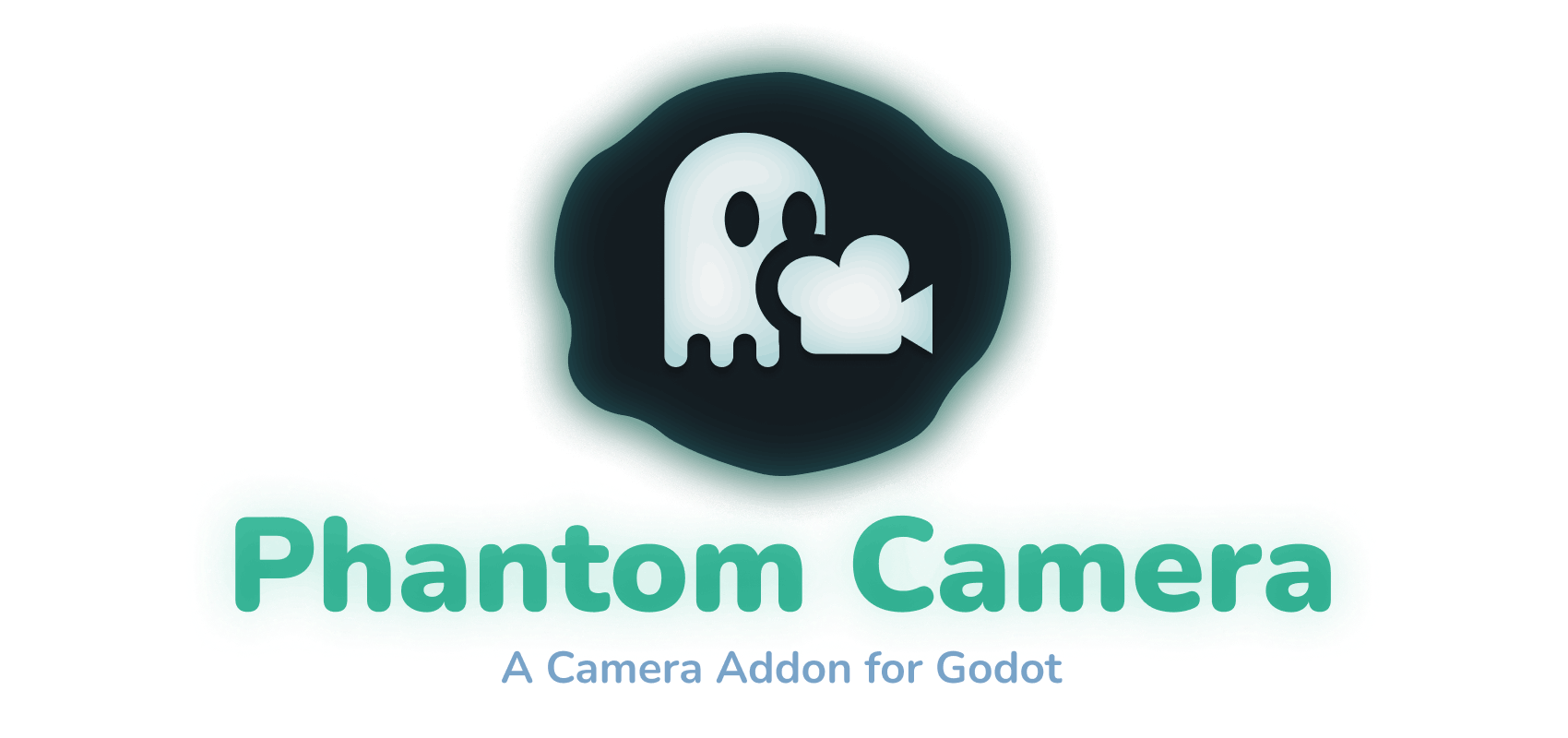⚠️ Upcoming 0.7 release will require Godot 4.2+
Phantom Camera is a Godot 4 plugin designed to provide and simplify common behaviors for the built-in Camera2D and Camera3D nodes - heavily inspired by a Unity package called Cinemachine.
It allows for simple behaviours such as following and looking at specific nodes, with an optional smooth/dampened movement, to more advance logic like reframing itself to keep multiple nodes in view and dynamically animate between specific camera positions, i.e. other PhantomCamera nodes, on demand.
Feature.Examples.mp4
| Documentation & Guides | Roadmap |
|---|---|
|
|
|

|
| (Spanish) |
Determines which PhantomCamera should be active with the Camera2D/Camera3D.
When a new camera recieves a higher priority than currently active PhantomCamera the Camera2D/Camera3D will seamlessly transition to the new one.
Define how the Camera2D/Camera3D should follow, or reposition based on, its target(s).
Sticks to its target.
Follows the target with an optional offset and damping.
|
2D |
3D |
|---|---|
2D-Follow-Simple.mp4 |
3D-Follow-Simple.mp4 |
Follows the centre of a collection of targets.
|
2D |
3D |
|---|---|
2D-Follow-Group.mp4 |
3D-Follow-Group.mp4 |
Follows a target while being positionally confined to a Path node.
|
2D |
3D |
|---|---|
2D-Follow-Path.mp4 |
3D-Follow-Path.mp4 |
Enables dynamic framing of a given target using dead zones. Dead zones enable the camera to remain still until the target moves far enough away from the camera's view. This is determined by the horizontal and vertical dead zone size in their respective properties within the inspector.
|
2D |
3D |
|---|---|
2D-Follow-Framed.mp4 |
3D-Follow-Framed.mp4 |
As the name implies, this mode is meant to be used for third person camera experiences.
It works by applying a SpringArm3D node as a parent, where its properties, such as Collison Mask, Spring Length and Margin, can be adjusted from the PhantomCamera node.
|
2D |
3D |
|---|---|
| Not available in 2D |
3D-Follow-Third-Person.mp4 |
Define the Zoom level for the Camera2D.
|
2D |
3D |
|---|---|
2D-Zoom.mp4 |
Not available in 3D |
Defines where the Camera3D should be looking—adjusting its rotational value.
Copies the rotational value of its target.
Looks At the target with an optional offset.
|
2D |
3D |
|---|---|
| Not available in 2D |
3D_Look_At_Simple.mp4 |
Looks at the centre of a collection of targets.
|
2D |
3D |
|---|---|
| Not available in 2D |
3D-LookAt-Group.mp4 |
Tweak how the Camera2d/Camera3D tweens to a newly active PhantomCamera.
|
2D |
3D |
|---|---|
2D-Tweening.mp4 |
3D-Tweening.mp4 |
Viewfinder.mp4
Preview what the Camera2D / Camera3D sees when attached to a PhantomCamera. Accessible from the bottom panel labelled Phantom Camera. The viewfinder rendering of the scene will only work when the combination of a Camera, PhantomCameraHost and PhantomCamera are present in the scene.
See the Phantom Camera - Wiki
A 2D and 3D example scenes can be found inside res://addons/phantom_camera/examples.
- In Godot, open the
AssetLibtab. - Search for and select "Phantom Camera".
- Download then install the plugin (be sure to only select the
phantom_cameradirectory). - Enable the plugin inside
Project/Project Settings/Plugins.
- Download a release build.
- Extract the zip file and move the
addons/phantom_cameradirectory into the project root location. - Enable the plugin inside
Project/Project Settings/Plugins.
- Download the latest
main branch. - Extract the zip file and move the
addons/phantom_cameradirectory into project's root location. - Enable the plugin inside
Project/Project Settings/Plugins.
For more help, see Godot's official documentation
See the project page for upcoming features.
Cameras are an essential part of practically any game for rendering what you see on the screen. But rarely do they remain static and immovable, but instead dynamic and changes based on what happens in the game.
The plugin is meant to simplify some common camera behaviour, such as smoothly moving between different points in space at specified points in time or retain a particular positional/rotational value relative to other elements.
The end goal is to make it functional enough to become a generalised camera extension for Godot projects.
Ongoing, but still in early stages. Core features have been implemented, but may change as more get added. Things will likely break or change along the way. It's also worth keeping in mind that lots of key and, likely, frequently used features are yet to be done.
See the project page to see planned features.
Unfortunately not.
GDScript has received a lot of changes and improvements in 4.0, but as a result it would require a rather large rewrite to make it compatible with older versions.
There's no deadline or precise timeframe for when things get implemented. The milestones page should give a good idea for what has, will, and currently being looked at.
Issues, PRs, suggestions and feedback are welcome. Please create an Issue for bugs or a Discussion post for suggestions or general discussions.
- Unity's Cinemachine Package for the key inspiration
- Godot for their amazing work creating the engine


